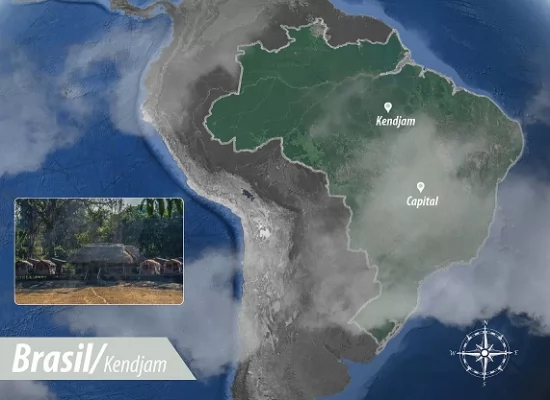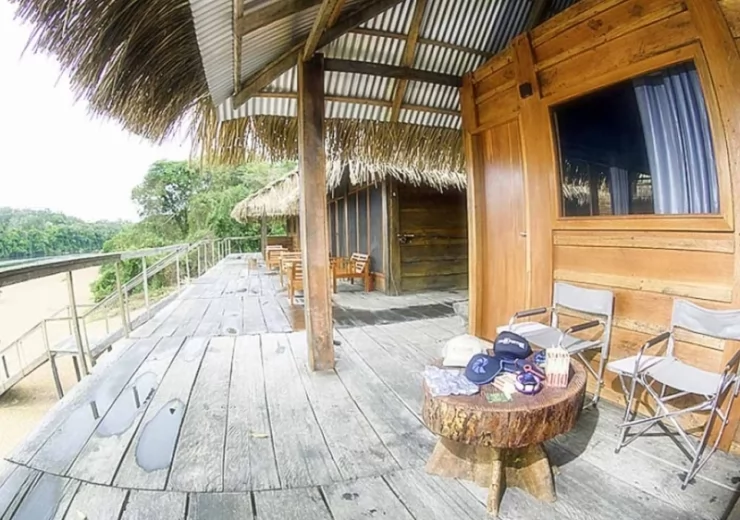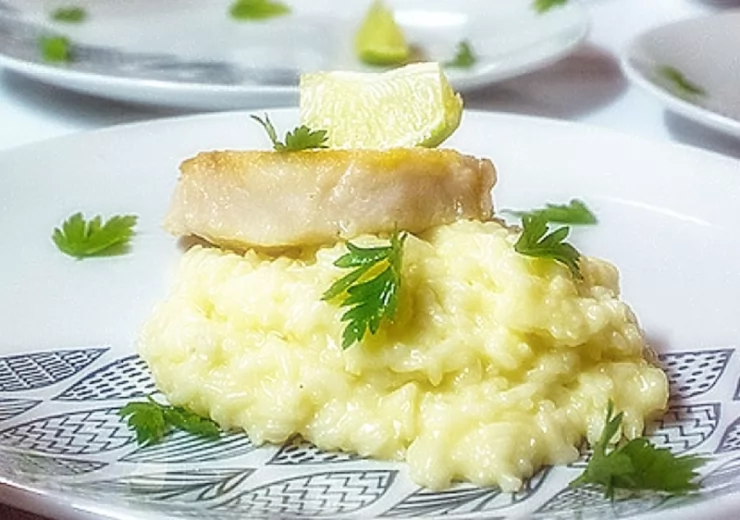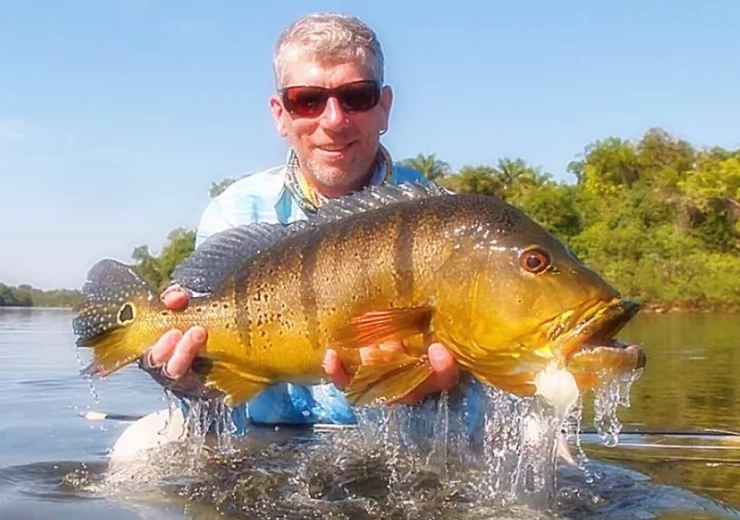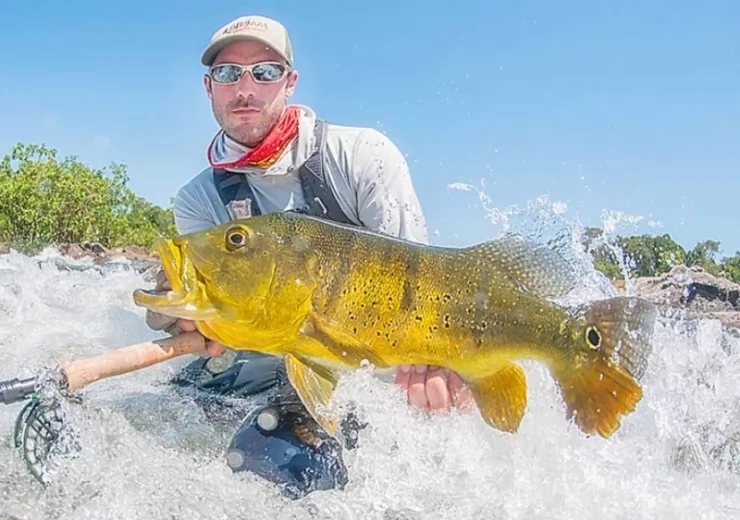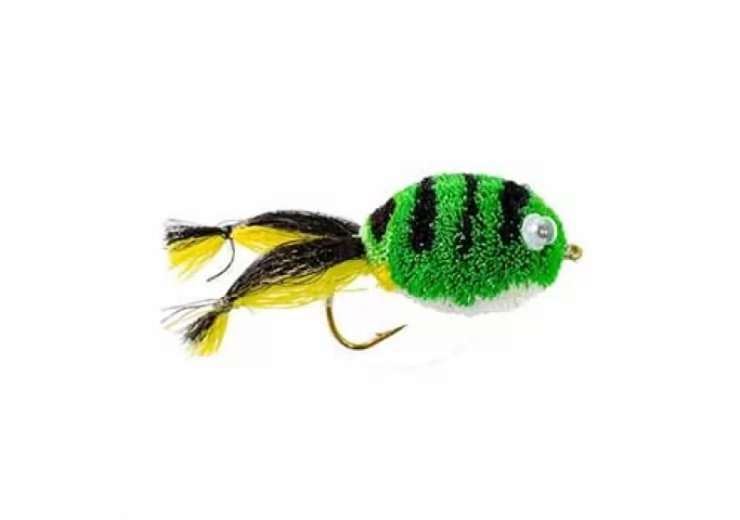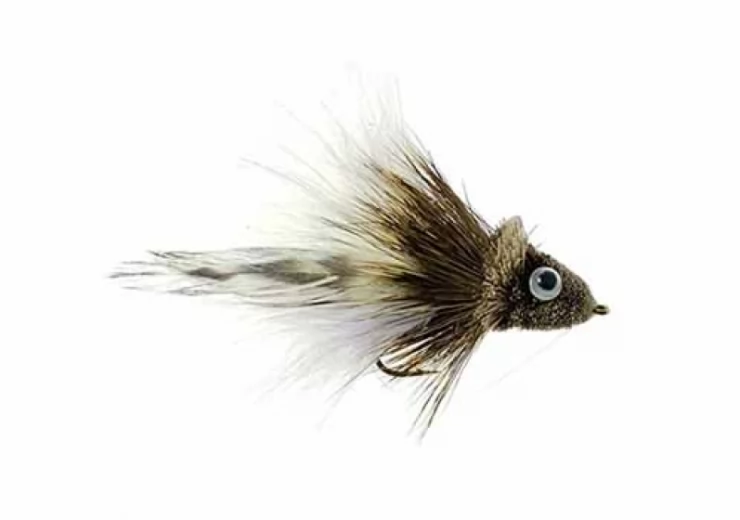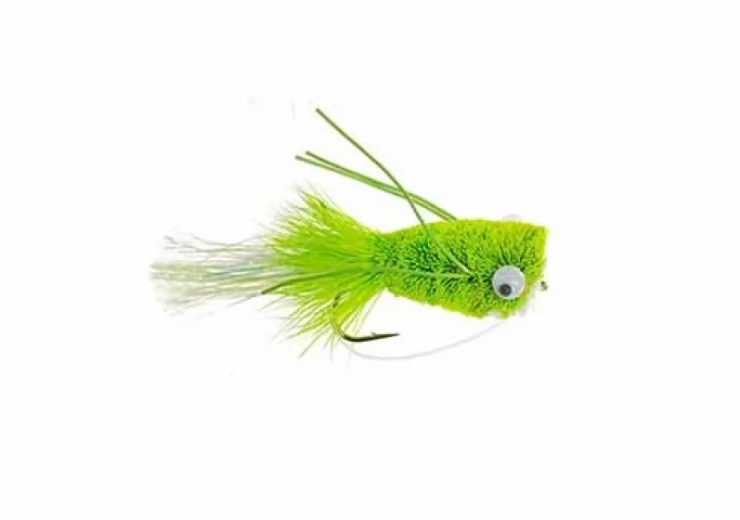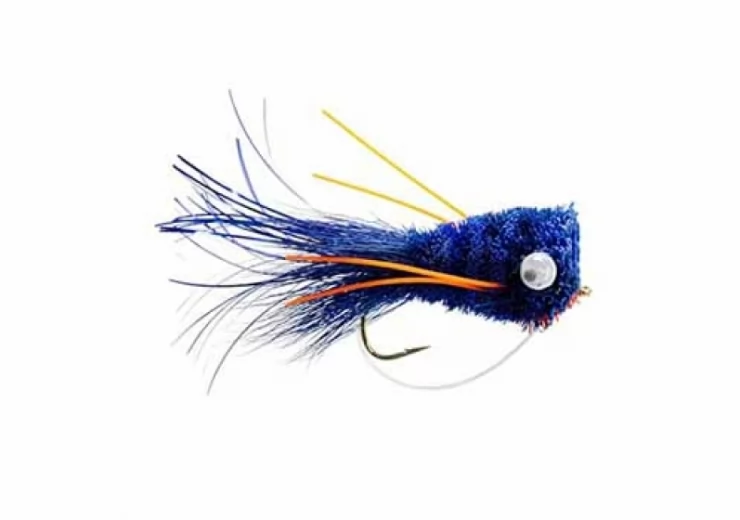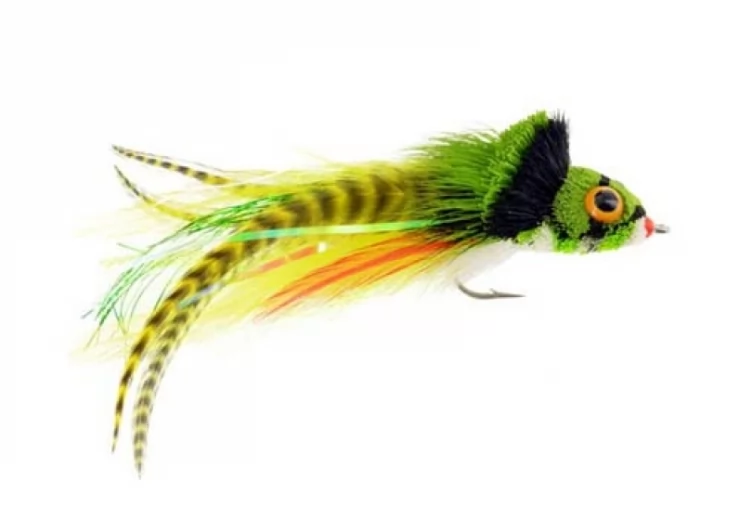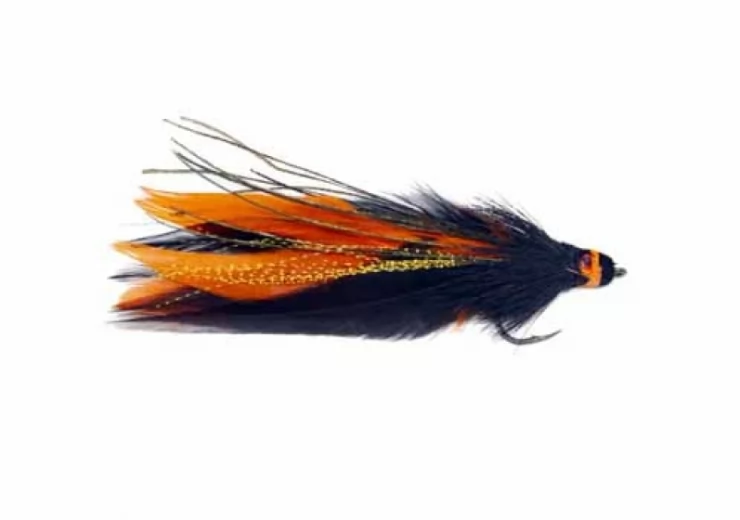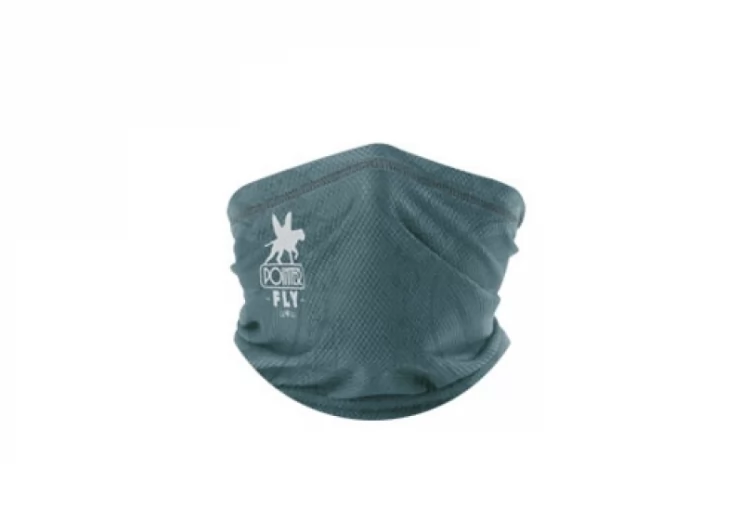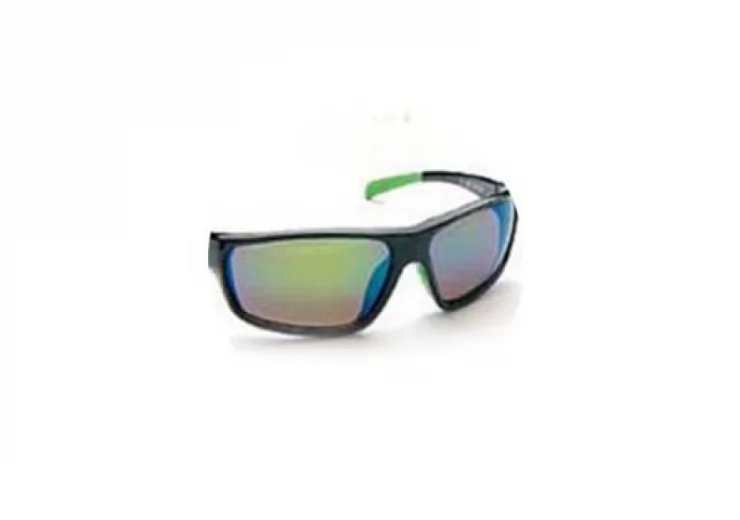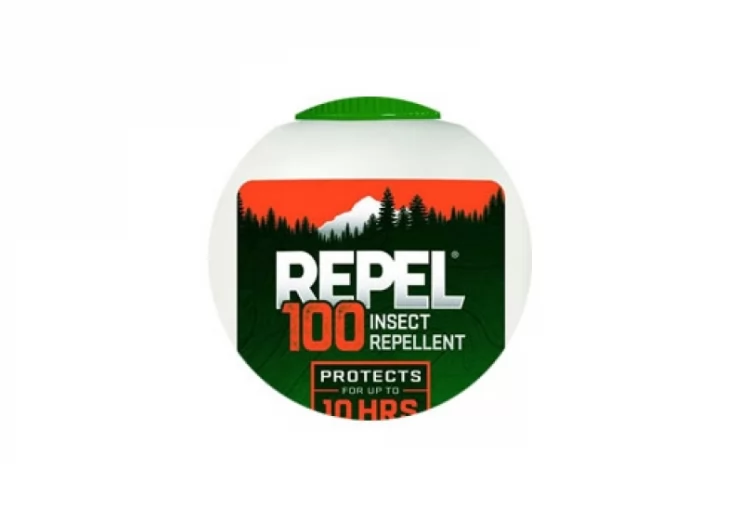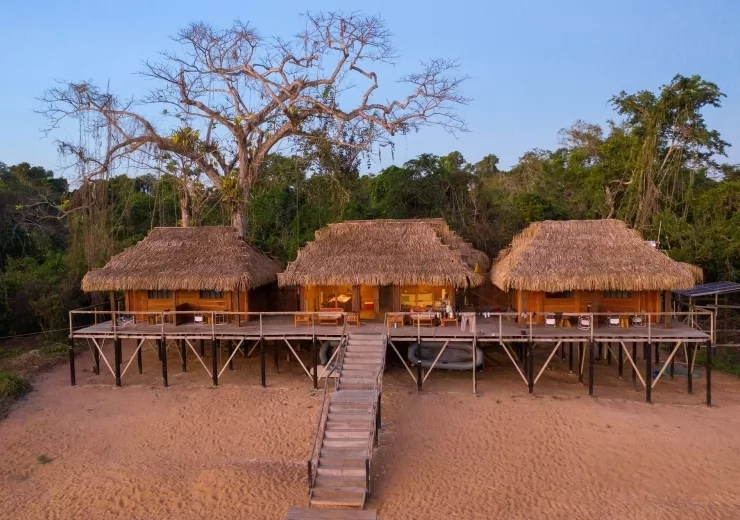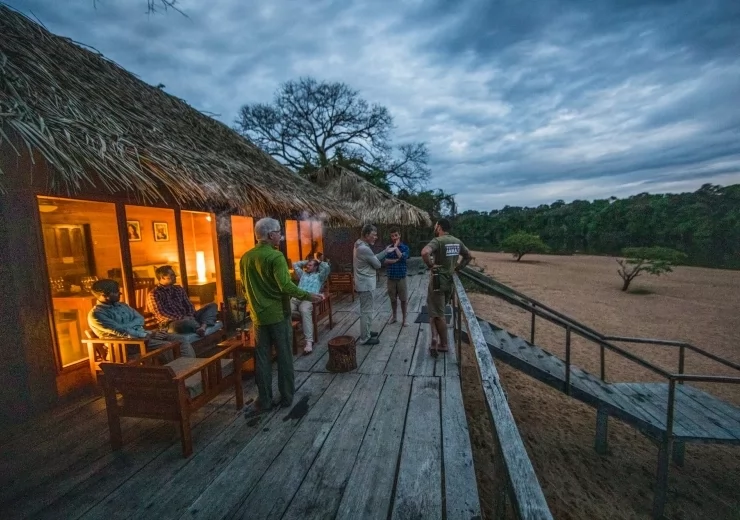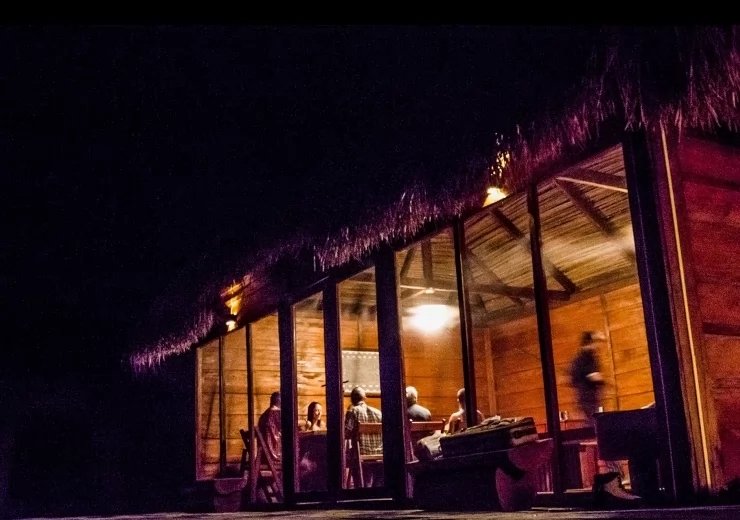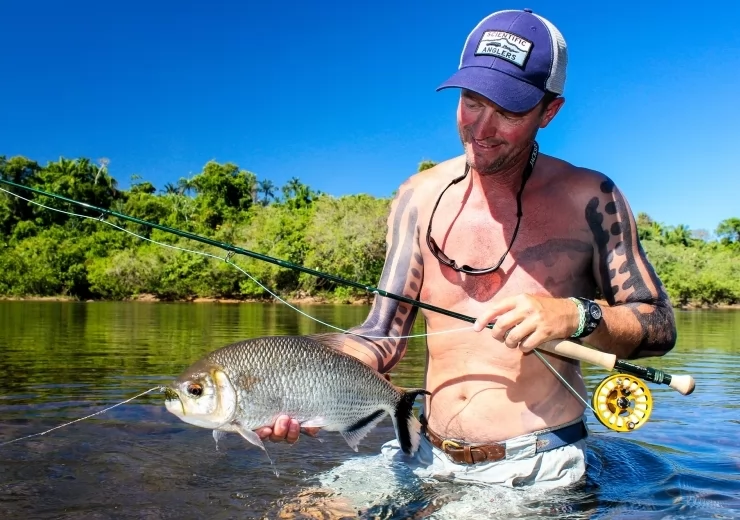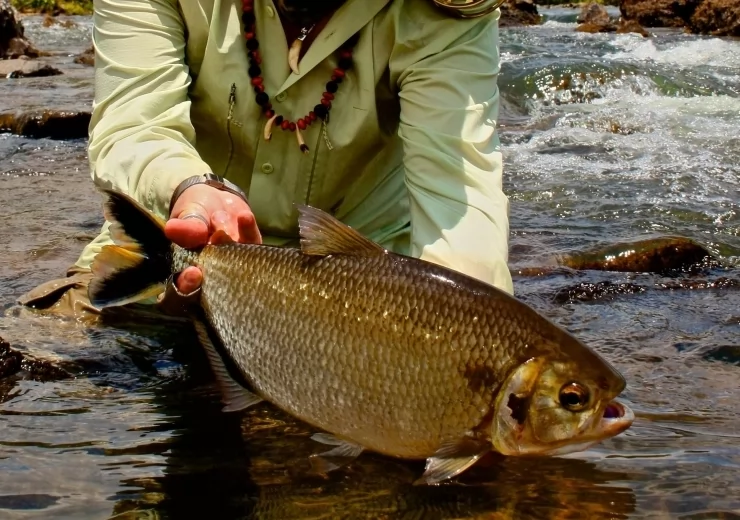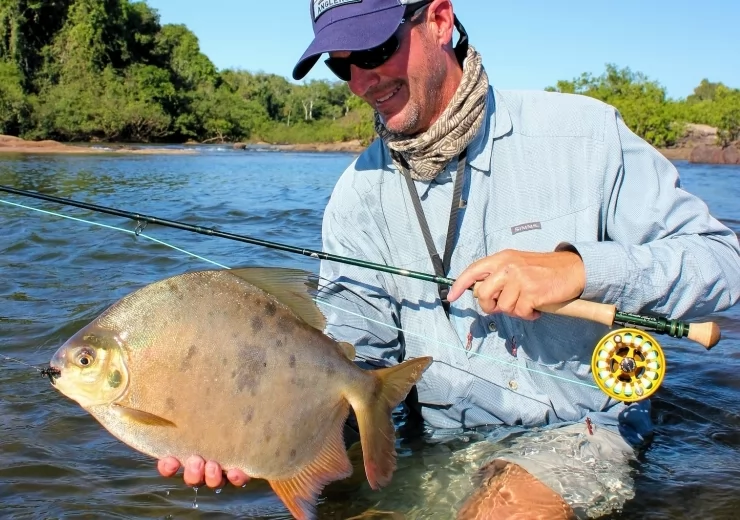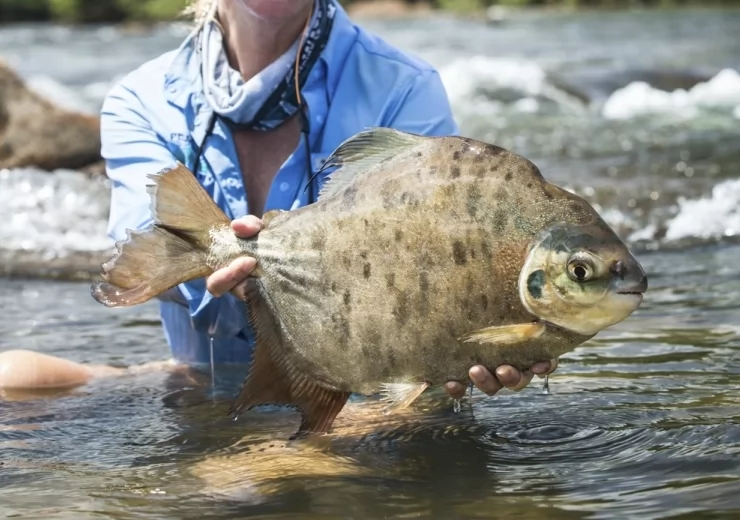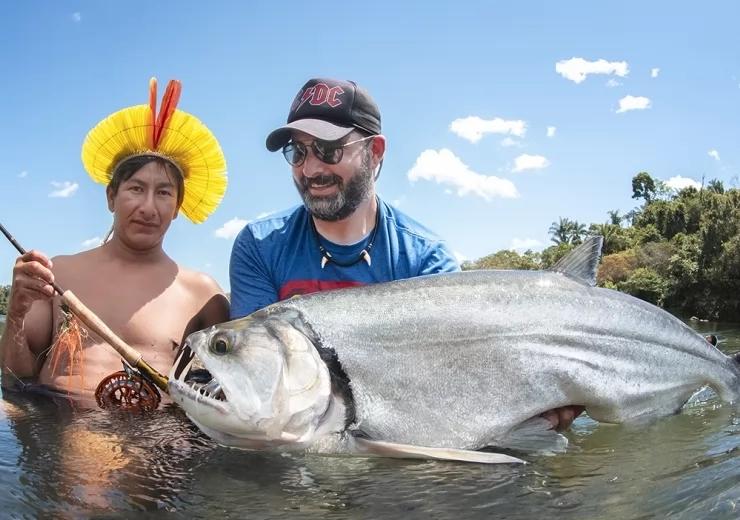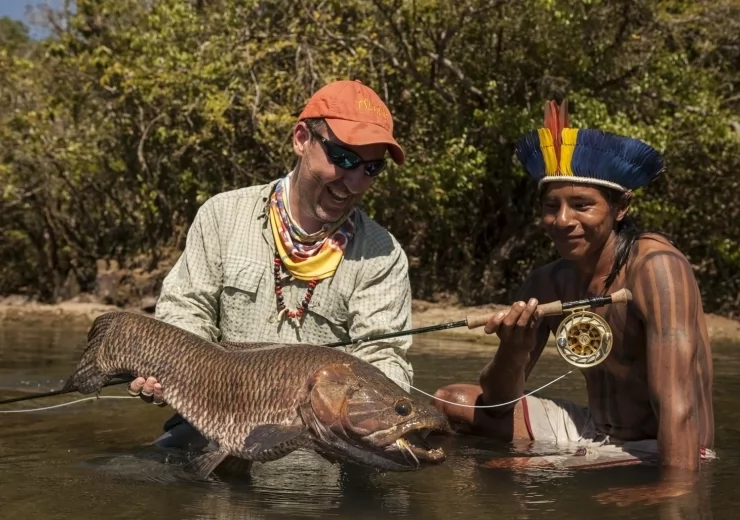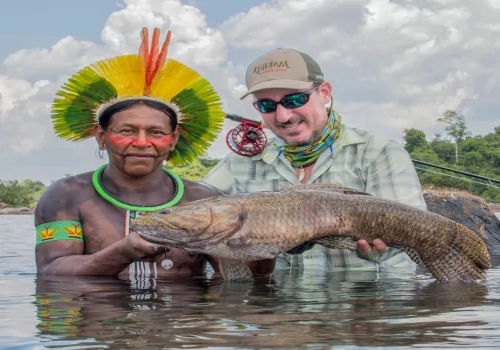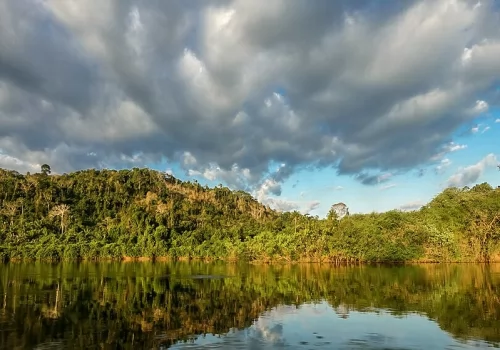The fishing
Kendjam Project’s rivers hold the most prolific multi-variety species fishery in Amazon.
Kendjam Project’s rivers hold the most prolific multi-variety species fishery in Amazon and probably in entire freshwater rivers on earth. Anglers can target various species using different angling techniques all in same runs and pools. The mighty Pacu eat insects and Anglers can fish for them with dries and wet flies! The fast powerful barracuda-like freshwater predator, Bicudas that once hooked will burn your fingers in a second. Anglers will experience sight casting for 10-25 pound Trairao in shallow water and tributaries. The waters are impressively clear, the granite base is what makes the water very clear even after some rain. The river downstream from Kendjam community divides its course into many parallel channels creating several smaller fast clear water streams. It sets the stage for the awesome and unique fishing ground in the Amazon.
Species
Peacock Bass - is a predatory freshwater fish native to the Amazon and Orinoco basins, as well as rivers of the Guianas, in tropical South America. The speckled peacock bass is the largest species and can grow to 1 m (3.3 ft) in length, and may be the largest of all cichlid fish. Most display a color pattern based on a theme of three wide vertical stripes on their bodies, sometimes with smaller intermediate bands, only a grey, brown, yellow, or green background.
The largest species in the genus, the speckled peacock bass, reaches up to 13 kg (29 lb) in weight and 1 m (3.3 ft) in length, possibly making it the largest species of cichlid.
Wolf fish - The wolf fish has the ability to live pretty much everywhere in the tropical climate in Suriname, the smallest independent country in South America, whether the waters are shallow or deep: small streams, river springs, sparse water puddles, lakes, rivers — all provide suitable abodes. This creature can reach 39 inches (100 centimeters) in length and get as large as 88 pounds (40 kilograms), and it comes out at dusk and during the night to feed on other fish and small invertebrates.
Pacú - Is known for its teeth, which bear an eerie resemblance to human teeth. Pacus primarily eat plants and are considered mostly harmless to people, despite their kinship with piranhas. But they do occasionally eat other fish and can potentially outcompete native species or spread parasites or disease.
Even though they have square, straight, molar-like teeth, pacu have a seriously strong bite. Pacu have been considered a suitable fish for home aquariums in the past; however, due to their fast growth and the size they attain, it’s now thought that they don’t make good pets.
Payara - The most noticeable feature of H. scomberoides is the two long fangs protruding from its lower jaw. These are used to impale their prey, mostly smaller fish. It typically reaches a standard length of about 30 cm (1.0 ft), but can reach up to 51 cm (1.7 ft).There are reports of far larger individuals, up to 1.17 m (3.8 ft) in total length and 17.8 kg (39 lb) in weight, based on records by IGFA, but this likely involves confusion with the related H. armatus.
This fish is overall silvery with a dark spot behind the opercle and another at the lower base of the pectoral fin. In adults the tail is dusky on the basal half, turning paler (more transparent) towards the tip.
Matrincha - Is pound by pound one of the strongest fish in Kendjam. Their average size (2-8lbs) is perfect for 5wt rods with dry flies like hoppers, beetles and topwater attractors.
There are two matrinchã species (Brycon amazonicus and B. cephalus), both are omnivores when adults with a preference for fruits and seeds. Adults are most abundant in blackwater and clearwater tributaries whereas young fish are confined to whitewater floodplains. Both species are also migratory and captured by fishing during spawning and dispersal migrations. During the low water period they often migrate to the lower courses of terra firme streams where they remain in pools.
Bicuda - Is a freshwater fish native to the Amazon region. It can be found in Peru and Brazil, the Orinoco River in Colombia and Venezuela, and the tributaries of the Amazon.
Grows to a maximum length of 88 cm (35 in), and has a maximum published weight of 6 kg (13 lb). It has ten to eleven dorsal soft rays, nine to eleven anal soft rays, and 48 to 49 vertebrae. It lacks dorsal and anal spines. It is a carnivore, and typically preys upon smaller fish.
